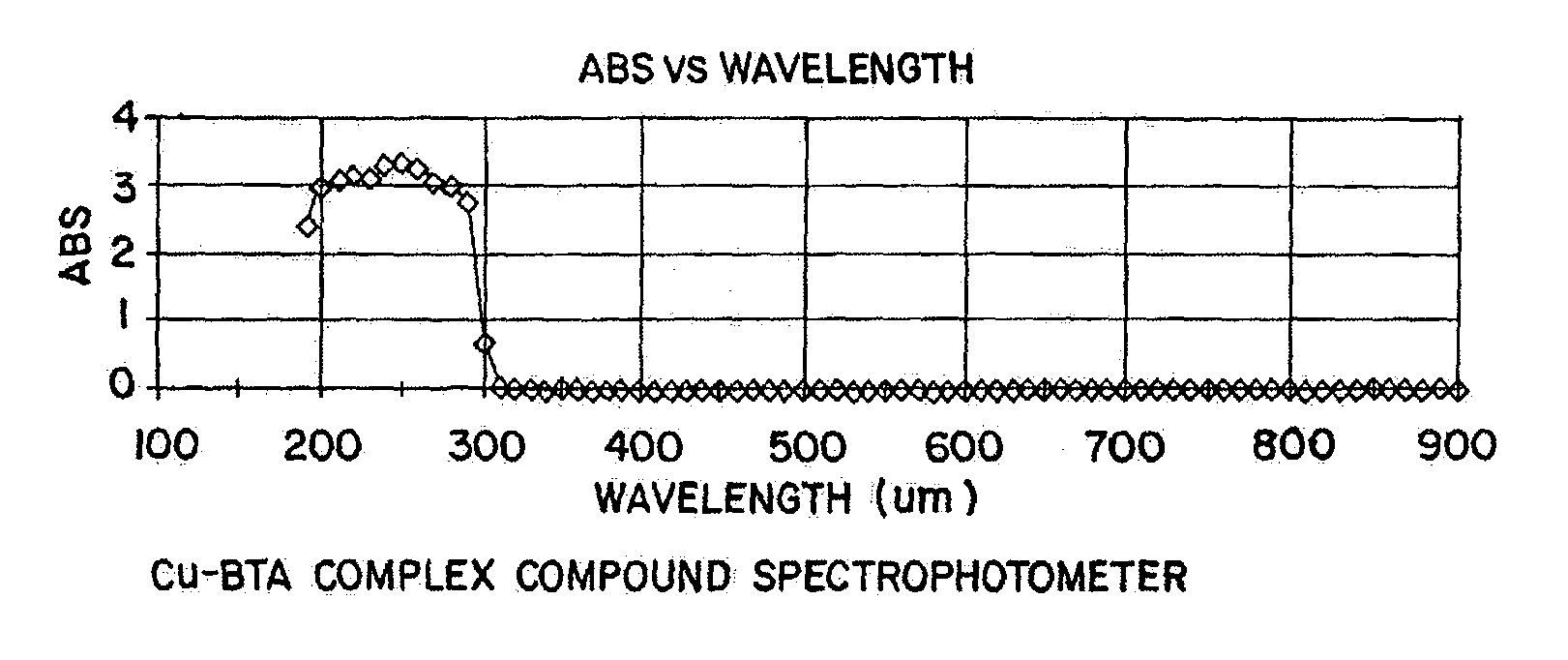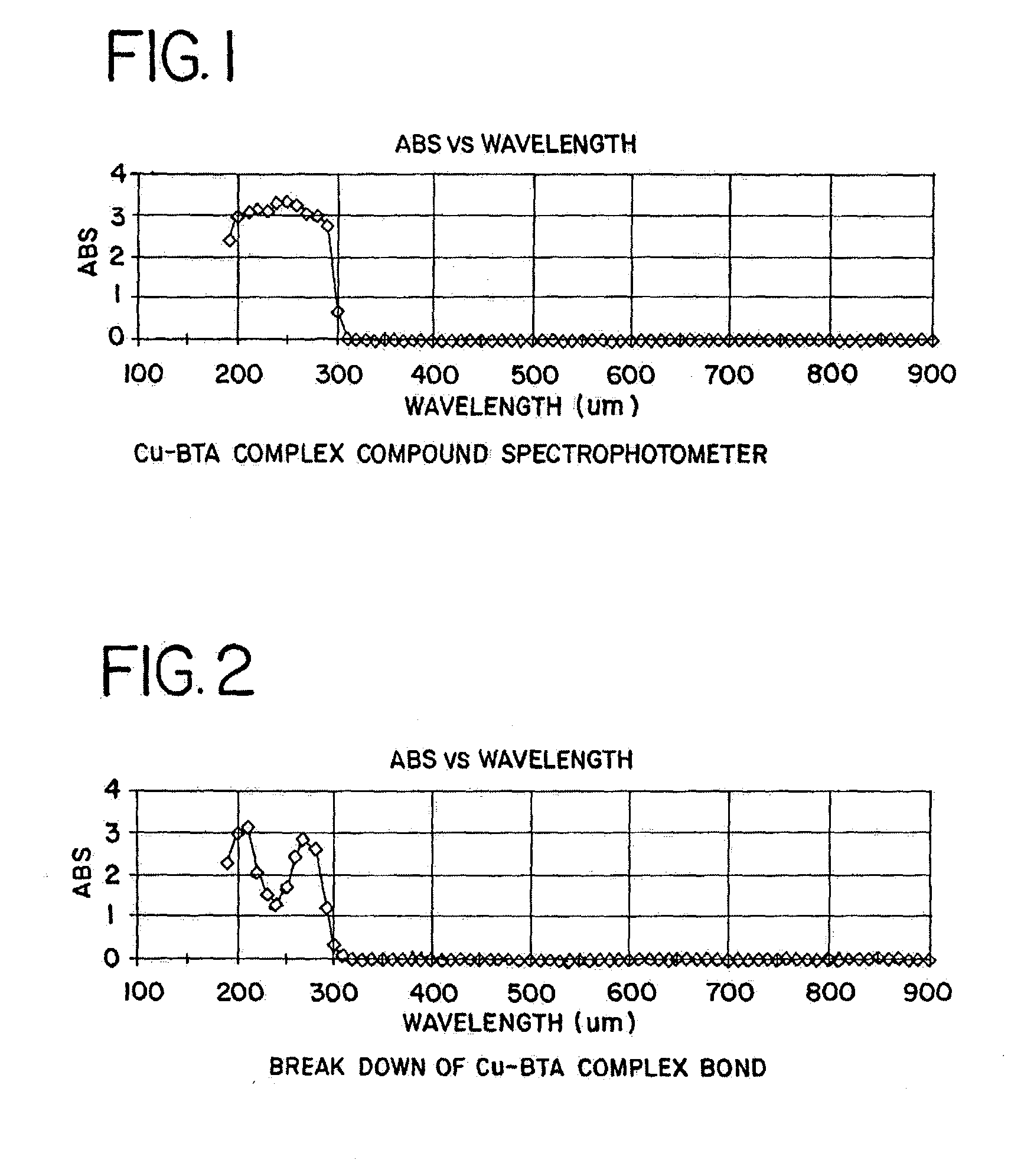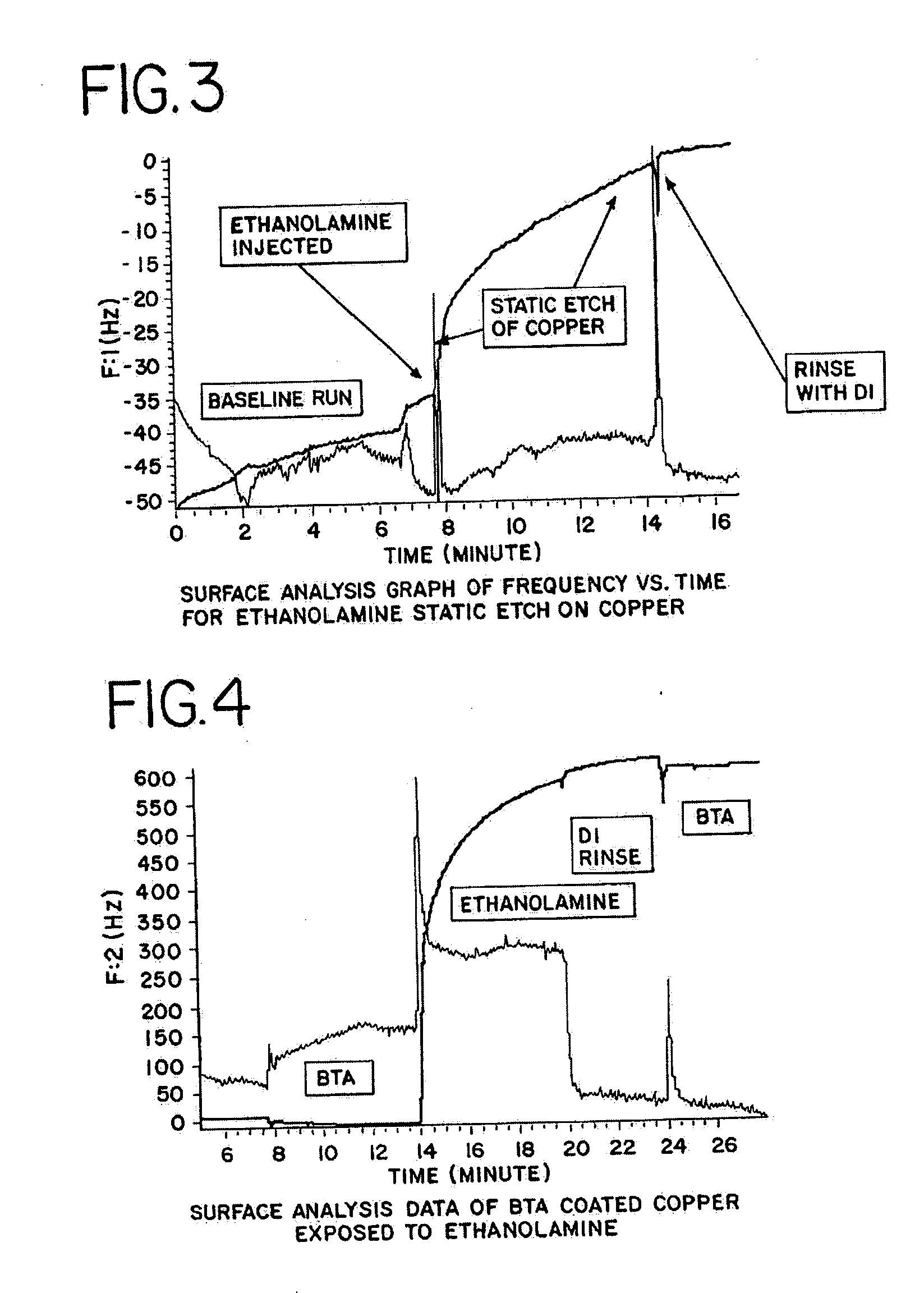Copper polishing cleaning solution
a technology of copper polishing and cleaning solution, applied in the direction of electrostatic cleaning, detergent composition, cleaning process and apparatus, etc., can solve the problems of reducing device performance, focusing problems of photolithography equipment, low yield, etc., to prevent the re-deposition of copper ions, and minimize the excess of copper etching and corrosion
- Summary
- Abstract
- Description
- Claims
- Application Information
AI Technical Summary
Benefits of technology
Problems solved by technology
Method used
Image
Examples
example i
[0059] Using the procedure described above, the each of the compounds shown below in Table I reacted with Cu-BTA complex and dissolved the Cu-BTA complex.
1TABLE I Compounds Tested for Reactivity with a Cu-BTA Complex Compound pH Nitric acid 2 Hydrochloric acid 2 CMP oxide slurry Klebosol 1508-50 (NH.sub.4OH stabilizer) 11 CMP oxide slurry Klebosol 30N50 pH 9.9 (NH.sub.4OH stabilizer) CMP oxide slurry Klebosol 1501-50 (KOH stabilizer) KOH 11 NH4OH 11 Tetramethylammonium hydroxide 10 Ammonium sulfide Ethanolamine 10.5 Ethylenediamine 10 Diethylenetriamine 10 N-propylethylenediamine 10 Triethylenetetramine 10
[0060] The samples prepared in accordance with the procedure described above were timed to determine how the time period required for each cleaning solution to react with the Cu-BTA complex. Each of the cleaning solutions listed in Table I reacted to break up the Cu-BTA complex within about 30 seconds.
example ii
[0061] To evaluate the static etching of copper and the etching of a Cu-BTA complex, samples were prepared for surface analysis. To evaluate the static etching of copper, a substrate having a small amount of copper deposited on a substrate was placed in the analysis chamber of a surface analysis apparatus. The sample chamber was then flooded with DI water and the temperature of the sample chamber was brought to about 25.degree. C. In the surface analysis instrument, the reaction of a chemical introduced to the sample chamber can be observed by monitoring a change in a frequency measurement output by the instrument. After taking an initial frequency measurement other chemicals can be added to the sample chamber to observe their effect on the copper sample.
[0062] To determine the effect of ethanolamine, for example, after about 6 minutes and 50 seconds, about 5 drops of 99% ethanolamine were added to the DI water in the sample chamber. FIG. 3 illustrates a surface analysis graph for t...
example iii
[0065] Several cleaning fluid compositions according to the invention are listed below in Table II. These solutions are reactive with Cu-BTA complex residues, but do not corrode copper.
2 TABLE II Aqueous Complexing agent Surfactant Inhibitor PH adjuster Final pH Solution 1 DIW Citric acid BTA Ethanolamine 10 Solution 2 DIW Tartaric acid BTA Ethylenediamine 10 Solution 3 DIW Citric acid BTA Diethylenetriamine 10 Solution 4 DIW Acetic acid BTA N-propylethylenediamine 10 Solution 5 DIW Glycine BTA Triethylenetetramine 10 Solution 6 DIW Citric acid BTA Tetramethylammonium 10 hydroxide Solution 7 DIW Glycine BTA Tetramethylammonium 10 hydroxide Solution 8 DIW Glycine Triton 45 BTA Tetramethylammonium 11 Polystep hydroxide
[0066] The preferred cleaning fluid compositions include a complexing agent, pH buffer, a surface inhibitor, and a pH adjusted which can be one of several different amine compounds. Water-soluble uni or bidentate amines, with NH.sub.2 groups at both ends of their carbon ...
PUM
| Property | Measurement | Unit |
|---|---|---|
| wavelength range | aaaaa | aaaaa |
| temperature | aaaaa | aaaaa |
| pH | aaaaa | aaaaa |
Abstract
Description
Claims
Application Information
 Login to View More
Login to View More - R&D
- Intellectual Property
- Life Sciences
- Materials
- Tech Scout
- Unparalleled Data Quality
- Higher Quality Content
- 60% Fewer Hallucinations
Browse by: Latest US Patents, China's latest patents, Technical Efficacy Thesaurus, Application Domain, Technology Topic, Popular Technical Reports.
© 2025 PatSnap. All rights reserved.Legal|Privacy policy|Modern Slavery Act Transparency Statement|Sitemap|About US| Contact US: help@patsnap.com



